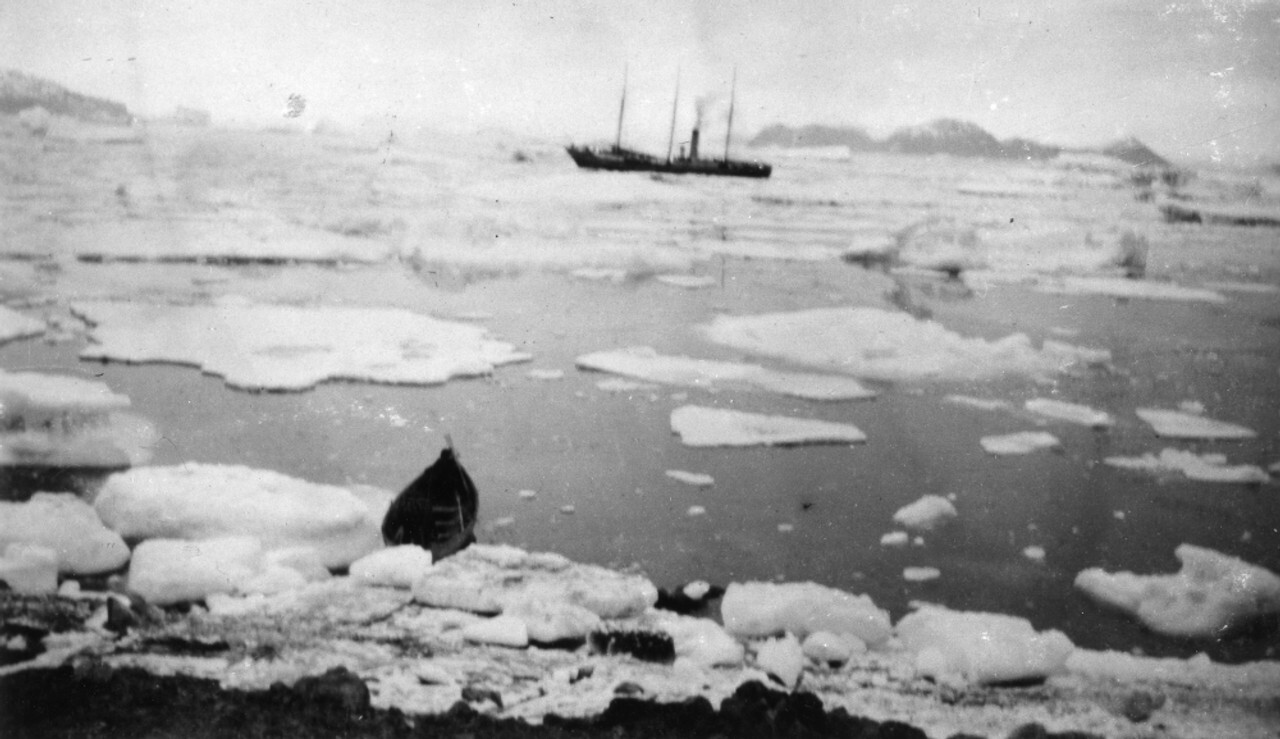Context of Expedition
Expedition Summary
The S.S. Roosevelt originally set out on the Roosevelt Expedition, sponsored by the Peary Arctic Club, with Robert Peary, Robert Bartlett, and crew members in July of 1905. This expedition set a record for Farthest North, reaching a latitude of 87 degrees 6 minutes North before turning back, never reaching the North Pole. Roosevelt withstood a fire, rudder damage, and encounters with fog and icebergs which ultimately forced the ship to return to New York City in December of 1906.
In 1908, Peary launched his final polar expedition, as the S. S. Roosevelt departed from New York City with 22 men. Other notable expedition members included Ross Marvin, Donald MacMillan, and George Wardwell. Over the course of the next several months, the group sailed northward, eventually wintering near Cape Sheridan on Ellesmere Island. At this point, the expedition included 7 expedition members, 19 Inuit, 140 dogs, and 28 sledges. In late February, the expedition members departed in waves and headed for the pole.
In the following month, most expedition members acting as supporting parties turned back. On April 2nd, Peary, Henson, and Inuit Egingwah, Seeglo, Ootah, and Ooqueah departed to attempt the estimated 130 nautical miles to the pole, using 5 sledges and 40 dogs. On April 6, Peary claimed to establish Camp Jesup within 3 miles of the pole, according to his own estimations. Henson went ahead to scout what was thought to be the North Pole, claiming that “I think I’m the first man to sit on top of the world.” Peary and company then began their return journey, eventually reaching the Roosevelt on April 26th and departing for home on July 18th.
Upon Peary’s return in 1909, despite some controversy surrounding whether or not Frederick A. Cook had made it to the pole a year earlier, a committee of the National Geographic Society and U.S. House of Representatives credited Peary with being the first to reach the North Pole. However, a reassessment of Peary’s expedition in 1988 by Wally Herbert found it lacked “essential data”, casting doubt on the validity of Peary’s claim.
Members of the expedition, according to Peary:
"The personnel of the expedition, as finally completed when the Roosevelt left Sydney on the 17th of July, 1908, included twenty-two men, as follows: Robert E. Peary, commanding expedition; Robert A. Bartlett, master of the Roosevelt; George A. Wardwell, chief engineer; Dr. J. W. Goodsell, surgeon; Prof. Ross G. Marvin, assistant; Donald B. MacMillan, assistant; George Borup, assistant; Matthew A. Henson, assistant; Thomas Gushue, mate; John Murphy, boatswain; Banks Scott, second engineer; Charles Percy, steward; William Pritchard, cabin boy; John Connors, John Coady, John Barnes, Denis Murphy, George Percy, seamen; James Bently, Patrick Joyce, Patrick Skeans, John Wiseman, firemen."

